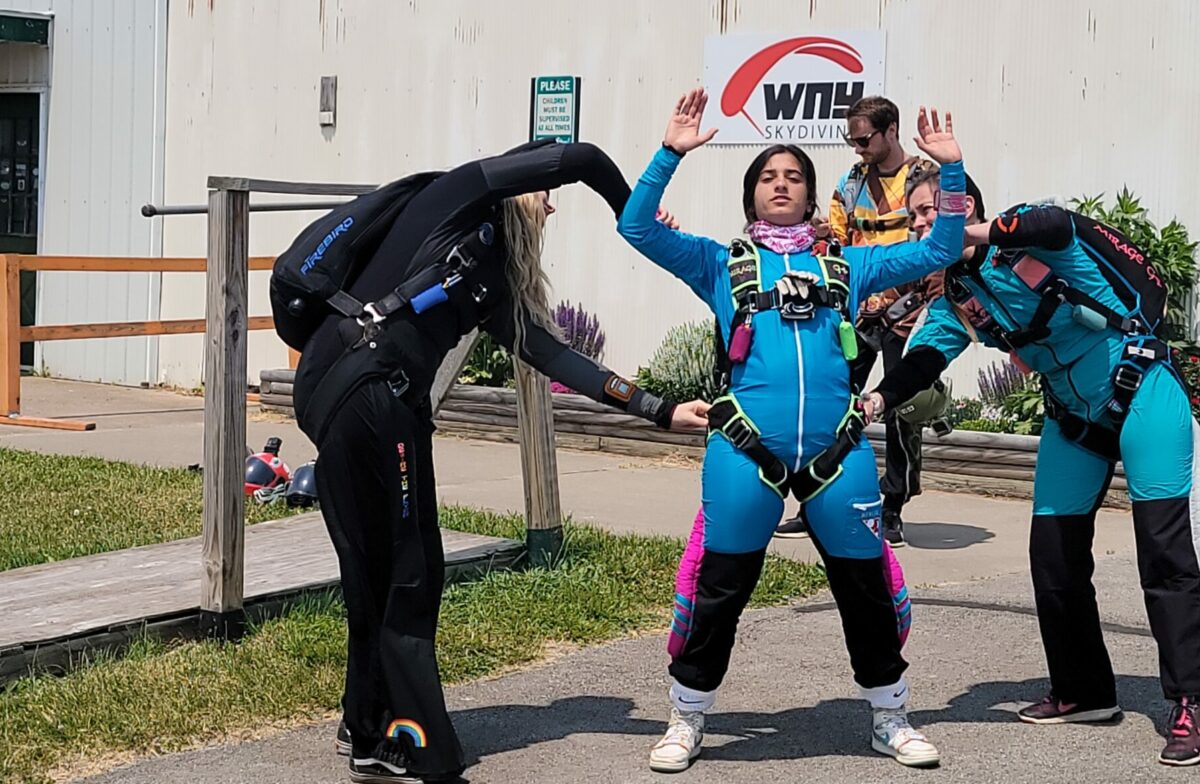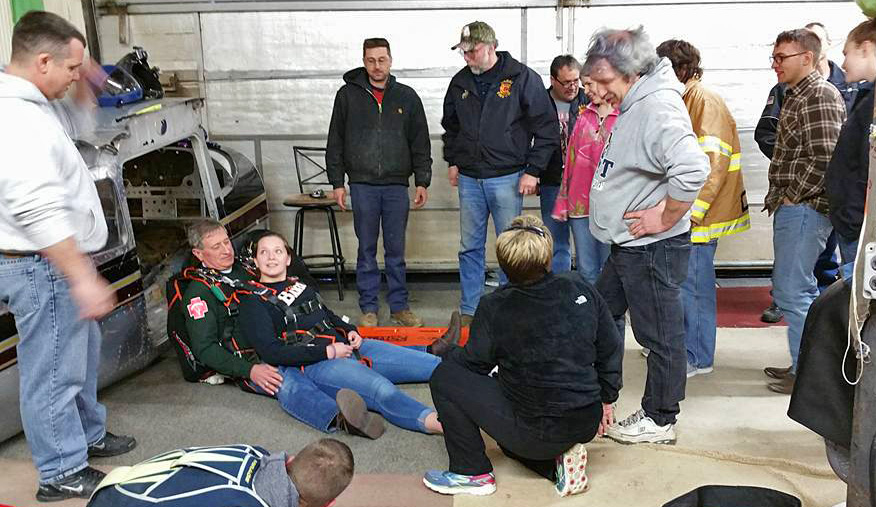Probably the most common questions skydivers hear relate to safety – some version of, Is skydiving safe? How safe is skydiving? or even, How dangerous is skydiving? The best way to get to the bottom of what’s underlying these and other safety questions is to dig into skydiving facts. Read on to get answers to these questions and more – and if you still have questions by the time you get to the end, we hope you’ll get in touch! We’re here to support you.
How Safe is Parachuting?
The most straightforward way to understand the risks associated with parachuting is through skydiving statistics. Statistics give insight into not only the fatality rate within skydiving but also make it easy to compare how risky skydiving is to other activities.
According to the United States Parachute Association (USPA), there were 10 fatal skydiving accidents out of approximately 3.6 million jumps in 2023. This equates to a fatality rate of 0.28 fatalities per 100,000 jumps. And that’s for licensed skydivers. The fatality rate of tandem skydiving is even better with an average of 1 fatality per 500,000 jumps over the last 10 years. In 2023, there were no tandem skydiving fatalities.
To put this into perspective, compare this rate to the fatality rate of activities that are often considered less risky than skydiving and you might be surprised:
- Driving: 12.4 per 100,000 people
- Scuba diving: 1-2 deaths per 100,000 participants
- Motorcycle riding: 2.34 deaths per 100,000 registered motorcycles

Skydiving Equipment Safety
Proper use and maintenance of skydiving equipment is paramount to ensuring a successful jump. So much so that the research and development that has been put into skydiving gear over the years has focused almost exclusively on making the equipment function as well as possible.
Modern parachute systems are meticulously designed to include safety features such as automatic activation devices (AADs) that automatically deploy the reserve parachute in case of an emergency. Main and reserve parachutes are made to open and fly properly in some of the most extreme conditions. Harness systems are built to distribute weight evenly and hold far more force than would typically be exerted during a jump.
Every piece of equipment involved in a skydive is subject to constant improvement and enhancement. And regular inspections are part of everyday life for a skydiver. FAA-certified riggers inspect and maintain the most crucial pieces of gear, and keeping an eye on wear and tear is part of every skydiver’s training.
We treat our gear like the life-saving equipment that it is!
Regulations and Certifications
The USPA has rolled out a staunch set of rules and regulations over the many decades of its existence, and we make sure we adhere to their guidance. USPA Member Dropzones (like WNY Skydiving) take a group member pledge that says we’ll comply with the USPA’s regulations. These rules cover everything from day-to-day operations with first-time jumpers to more unusual circumstances, like night jumps.
Jumping out of an airplane isn’t natural – humans weren’t designed to fly! As such, we take a measured approach to gaining our proverbial wings. Becoming a skydiver almost always starts with at least one tandem skydive so that you can become acquainted with the air while someone else is in charge. From there, students graduate to Accelerated Freefall (AFF) and coach jumps, which is a hands-on program where instructors gradually guide you to fly by yourself over a series of jumps.
Even after a skydiver gains their license, they are expected to continue to learn and grow. There’s a series of license levels (A through D) that have increasingly sophisticated requirements. There are options to become certified as an instructor, packer, or rigger too, all of which require additional training.

Safety Day at WNY Skydiving
Risk aversion is such a part of skydiving culture that dropzones actually hold an event called Safety Day at the beginning of every season. This is a day for all jumpers to come together to review safety procedures, practice techniques, and learn from past successes, challenges, incidents, and accidents.
The event usually consists of a series of seminars presented by the most experienced instructors, pilots, and safety advisors at the dropzone, and is a perfect opportunity for new and experienced jumpers alike to refresh their skills and bond over safety topics.
And the best part is that any jumper can attend, regardless of experience level! Keep an eye on our events page for the WNY Safety Day and other DZ happenings.
Common Skydiving Myths and Facts
Probably the most common myth about skydiving is that all skydivers are adrenaline junkies with a death wish, or at least that we live like we have nothing to lose. And that couldn’t be farther from the truth! Sure, we love a good rush now and again, but we love life!
Advancements in training, equipment, and regulations have empowered our worldwide skydiving community to champion a culture of safety, responsibility, and accountability. Despite what the media would have you think, we take rules seriously! After all, skydiving is only fun if you can do it a million times over (if you want to, which we do) … which means respecting the sport and following the rules.
When people think of skydiving accidents, they usually assume it has to do with a skydiver’s parachute not opening at all. But that’s a pretty uncommon occurrence in the sport.
So, what is the most common skydiving accident? Most skydiving accidents happen under a fully functioning parachute and are the result of user error. Most skydiving accidents occur within our most experienced ranks – the highest fatality rate is among licensed skydivers who push beyond their limits.
Fortunately, accidents severe enough to cause real injury or death are few and far between. But they do happen. That’s why we’re all committed to learning from past mistakes and avoiding repeating them in the future.
Are you ready to learn about skydiving safety firsthand? Book a tandem today and we’ll show you how we do it at WNY Skydiving! Blue skies!





